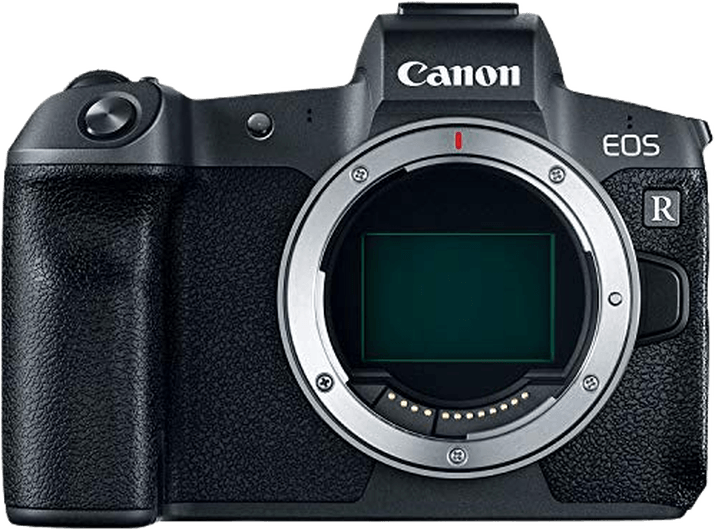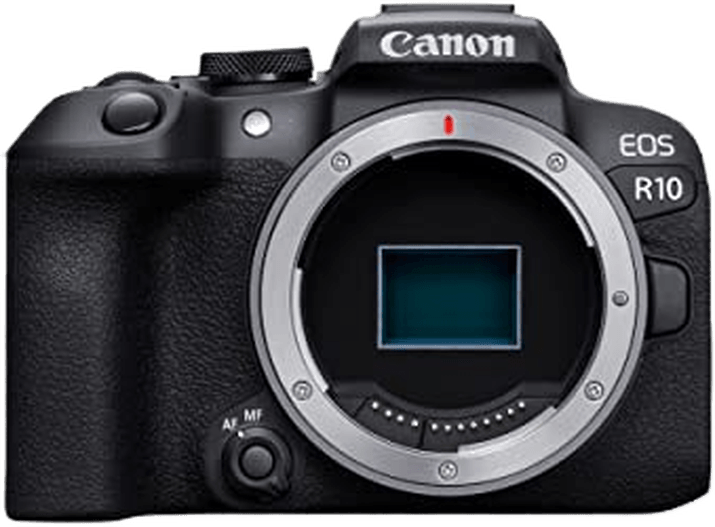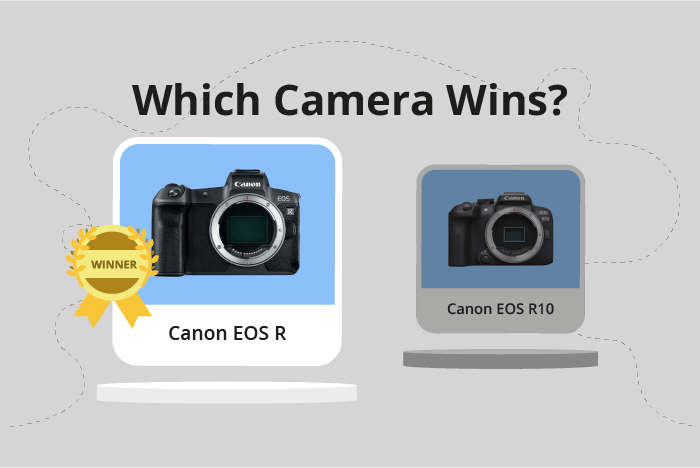Canon EOS R vs EOS R10 Comparison
Canon EOS R

Canon EOS R10

The Canon EOS R takes the lead with a score of 74/100, while the Canon EOS R10 trails behind at 69/100. Both cameras are mirrorless and share similarities in size and weight, with the EOS R measuring 136 x 98 x 84mm and weighing 1.07lbs, and the EOS R10 at 123 x 88 x 83mm and 0.94lbs.
The EOS R outshines the R10 with its higher score, which can be attributed to its better performance and features. Launched in 2018 with a price of $2300, it offers more advanced capabilities than the R10.
On the other hand, the EOS R10, released in 2022 at a significantly lower price of $980, has its advantages. It is a more compact and lightweight camera, making it more portable and user-friendly for those prioritizing size and weight.
Taking into account the specs and scores, the Canon EOS R proves to be a superior camera in terms of performance and features, while the Canon EOS R10 may appeal to those seeking a more budget-friendly and compact option.
Canon EOS R vs EOS R10 Overview and Optics
The Canon EOS R takes the lead in the optics comparison with a score of 73/100, while the Canon EOS R10 scores 71/100. Both cameras share several specifications, including the CMOS sensor type, Canon RF lens mount, and lack of image stabilization.
The EOS R stands out with its 30.3-megapixel resolution, which is higher than the EOS R10’s 24 megapixels. This difference allows the EOS R to capture more detail in images. Additionally, the EOS R features a full-frame sensor, which contributes to better low-light performance and increased dynamic range compared to the R10’s APS-C sensor. The EOS R also has a DXOMARK sensor score of 89, which is lower than the R10’s score of 97 but still respectable.
On the other hand, the EOS R10 has a faster shooting speed of 15 frames per second (fps), compared to the EOS R’s 8 fps. This makes the R10 better suited for capturing fast-moving subjects and action shots. Furthermore, the R10 features a more advanced Digic X processor, which could potentially result in faster processing and better image quality.
In terms of optics, the Canon EOS R offers a higher resolution and a full-frame sensor, making it better for capturing detailed images and performing well in low light. However, the EOS R10 has a faster shooting speed and a more advanced processor, making it more suitable for action photography. The choice between these two cameras ultimately depends on the user’s specific needs and preferences.
Canon EOS R vs EOS R10 Video Performance
The Canon EOS R10 outperforms the Canon EOS R in video capabilities, scoring 91/100 compared to the EOS R’s 70/100. Both cameras share some common video specifications, such as a maximum video resolution of 4K and dimensions of 3840 x 2160. Additionally, both cameras have built-in time-lapse functionality.
The EOS R10’s superiority in video performance is largely due to its higher maximum video frame rate of 120fps, compared to the EOS R’s 30fps. This significant difference allows the EOS R10 to capture smoother and more detailed slow-motion footage, providing more creative options for videographers.
Though the EOS R falls short in terms of frame rate, it still offers respectable video quality with its 4K resolution and built-in time-lapse functionality. However, the lower frame rate limits its versatility when compared to the EOS R10, making it less suitable for capturing fast-moving action or producing slow-motion effects.
Considering each point, the Canon EOS R10 stands out as the superior choice for videographers seeking advanced video capabilities. Its higher frame rate of 120fps enables smoother, more detailed footage, which is particularly beneficial for slow-motion and action scenes. While the Canon EOS R still provides decent video quality, its lower frame rate limits its versatility and creative potential in comparison to the EOS R10.
Canon EOS R vs EOS R10 Features and Benefits
The Canon EOS R triumphs over the Canon EOS R10 with a feature score of 87/100, a significant 17-point lead compared to the R10’s 70/100. Both cameras share essential features such as touchscreen capabilities, flip screens, WIFI connectivity, and Bluetooth compatibility. However, the EOS R outshines the R10 in certain aspects, making it the superior choice.
The EOS R boasts a larger screen size of 3.2 inches, providing a more comfortable viewing experience than the R10’s 3-inch screen. Additionally, the EOS R’s screen resolution of 2,100,000 dots is significantly higher than the R10’s 1,040,000 dots, resulting in a crisper and more detailed display for image review and menu navigation.
Despite the EOS R’s advantages, the EOS R10 still offers a solid set of features. The R10 matches the EOS R’s touchscreen, flip screen, GPS, WIFI, and Bluetooth capabilities, making it a viable option for those seeking a camera with these essential features. However, the EOS R10’s lower feature score and fewer advantages make it a less appealing choice when compared to the EOS R.
The Canon EOS R’s larger screen size and higher resolution grant it a clear edge over the EOS R10. While both cameras share core features, the EOS R’s superior display and overall higher feature score make it the better choice for photographers seeking an advanced and user-friendly camera.
Canon EOS R vs EOS R10 Storage and Battery
The Canon EOS R10 wins in the storage and battery category with a score of 40/100, while the Canon EOS R scores 35/100. Both cameras have one memory card slot and support USB charging. They accept SD, SDHC, and SDXC memory cards, with the EOS R being UHS-II compatible and the EOS R10 being UHS-I compatible.
The EOS R10 outperforms the EOS R in battery life, providing 450 shots compared to the EOS R’s 370 shots. This longer battery life is due to the EOS R10 using the LP-E17 battery type. In contrast, the EOS R uses the LP-E6N battery type.
The EOS R, however, has the advantage of being compatible with faster UHS-II memory cards, which can potentially lead to quicker file transfers and reduced buffering. The EOS R10 only supports the slower UHS-I memory cards.
Taking into account these factors, the EOS R10 is the better choice for photographers who prioritize longer battery life. On the other hand, the EOS R may be more suitable for those who require faster memory card performance.
Alternatives to the Canon EOS R and EOS R10
Are you still undecided about which camera is right for you? Have a look at these popular comparisons that feature the Canon EOS R or the Canon EOS R10:

